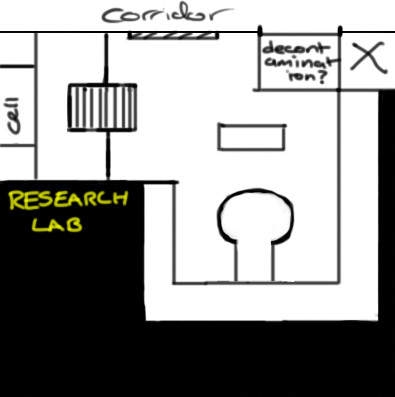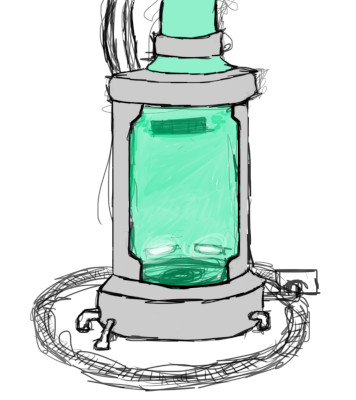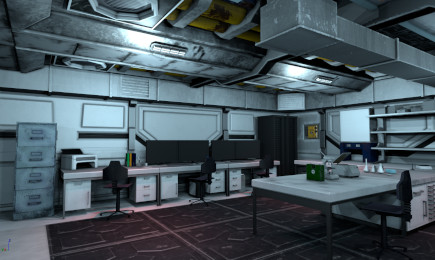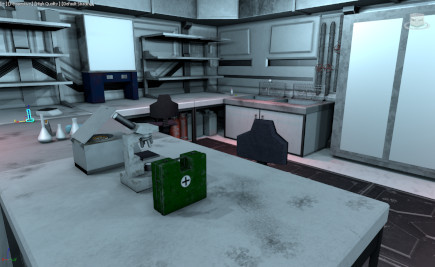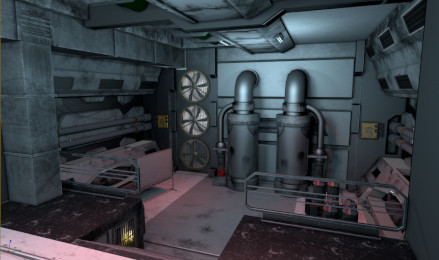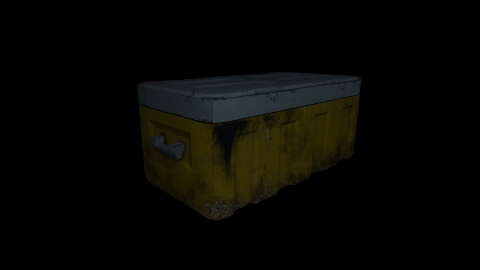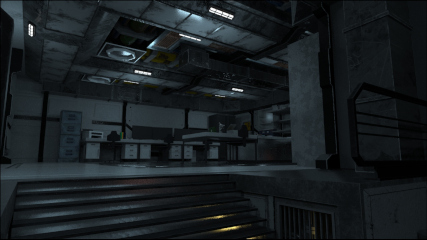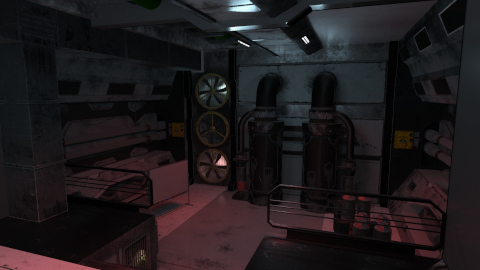Sci-Fi Laboratory
Attempting to Model in a New Style
Throughout the majority of 4th year, we were given the option to have a year long project. I decided to make a sci-fi laboratory environment as a challenge as I had
never modelled anything sci-fi before. In the beginning of this project I spent some time figuring out a suitable scope for the project and eventually completely dialled
everything back as I wanted to focus more on quality over quantity.
I spent a lot of time searching for images relating to the sci-fi aesthetic and began to plan out a project design and settle on what style of sci-fi that I was going to try and emulate. My reference images
helped me decide on attributes of the project such as style, location, lighting, colour and more.
This project gave me the opportunity to attempt to model in a style that I wasn't comfortable with and had never tried to create before, I also took this time to learn how
to use substance painter to help me texture my models to a higher standard.
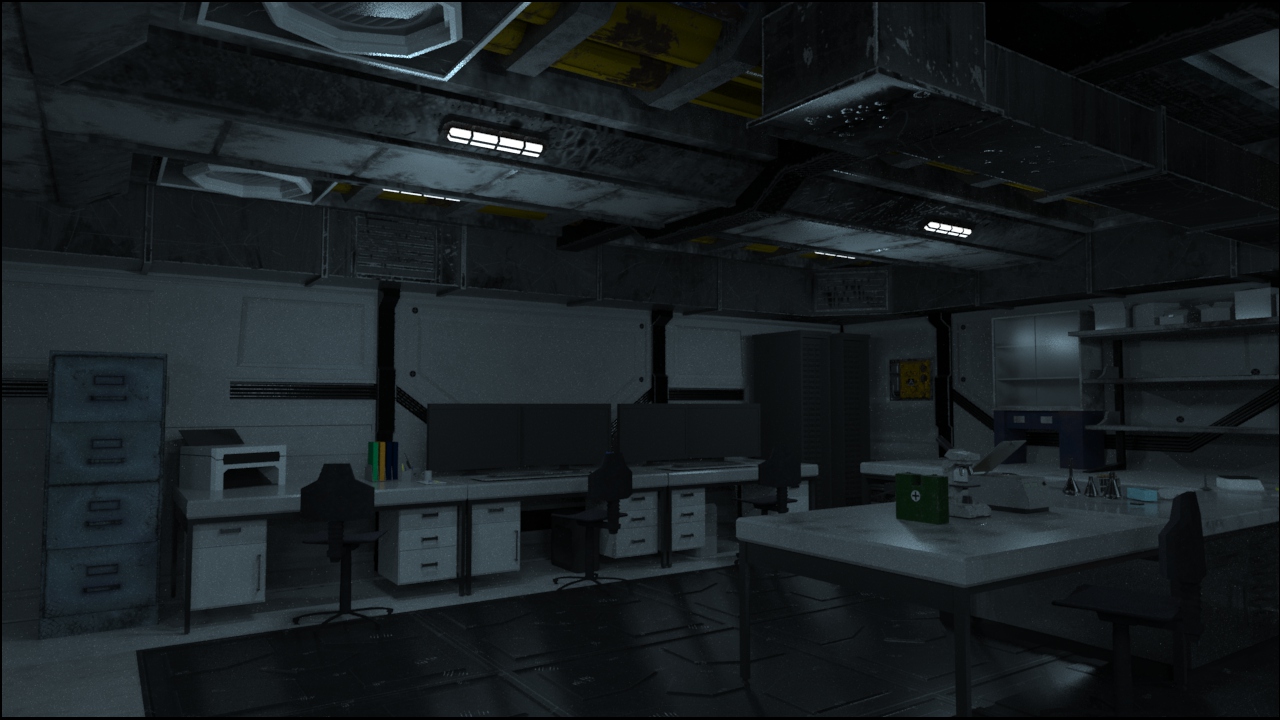
Genre: Sci-Fi
Software: 3DS Max/Substance Painter
Development Period: 6 months
Platform: PC
Art Direction
Inspiration
Typically, for my projects, they tend to be very modern in setting, or a couple of my projects from 1st and 2nd year were a bit more historical in setting, using castles and
more gothic aesthetics, but because of my strong interest in the Alien franchise it really spearheaded my interest in Sci-Fi for this project. Other media such
as; DOOM, Dead Space, Star Trek and Doctor Who, drove me towards making the environment that I created for this project.
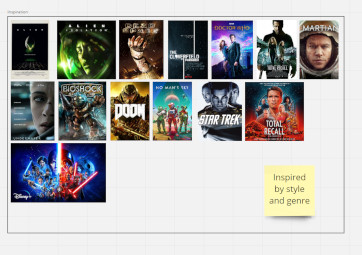
Inspiration Board
The Colony
The initial project idea was to create the exterior of a Human Colony on an alien planet, which had been heavily inspired by the Alien Franchise, stretching from the Nostromo Space Ship
in Alien (1979), to Hadley's Hope on Acheron LV-426 in Aliens (1986), to Freya's Prospect on BG386 in Aliens vs. Predator (Rebellion Developments) in 2010, and lastly to Sevastapol found in
Alien: Isolation (Creative Assembly/Feral Interactive) in 2014.
While I am not overly interested in most Sci-Fi genres, there is something about the Alien franchise that really grips me, the whole aesthetic of this universe really resonates
with me. However there were a lot of other inspiritations that I had gathered for my colony environment as well.
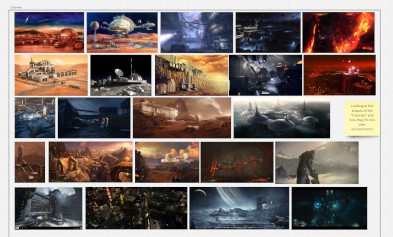
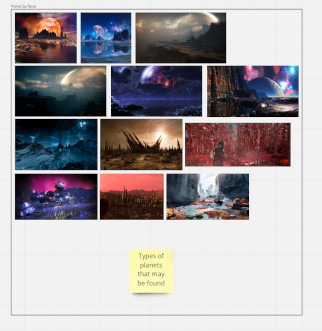
Reference Images gathered for both the Colony and the planet that it would be on.
Personally I have always much preferred winter as a season over any of the others, I also prefer it to be cold and snowing than anything else, so this was probably the main reason that
I was leaning towards an icy blue planet for the colony to be on. It also meant that I could potentially play around with some particle effects and fog to have the colony potentially in a snowstorm for
one of the renders if I had the time to.
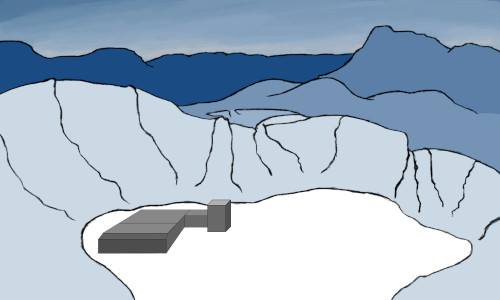
Early WIP Concept for a Colony Idea (Scrapped)
However due to the large volume of work needed for an entire colony, as well as the planet, I quickly decided that it would be near impossible for me to achieve a
high quality for this environment since I would also be working on multiple other projects throughout the year. This led me to take my initial idea and condense it down to a
more managable size. I downsized from an entire colony, to the interior of a small space ship and I planned out all of the rooms that I would need
to model. This allowed me to remove excess if needed, planning ahead to best suit the time frame that I had for the project.
The Spaceship
With scaling down the projects size, I began to focus my attention to the interior of Sci-Fi environments and began to gather supporting imagery that would help me design my own environment. I tried to collect a
broad range of styles, having a mix of very bright, clean hallways and rooms, to dark and grungey ones too, as I hadn't quite settled on what style I would rather go for.

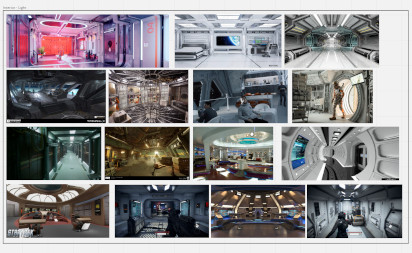
Reference Images gathered for the interior of the ship.
I'd never really considered all the types of rooms that would be on a spaceship, so I decided to create a list of what kind of rooms would be important for a smaller ship. The type
of ship that I was wanting to create would be some kind of adventuring/scavenger ship. One that perhaps kept an eye out for interesting planets or things out in space and would collect potentially
valuable items, or collect samples of different things to research. With a main goal of selling whatever things they came across.
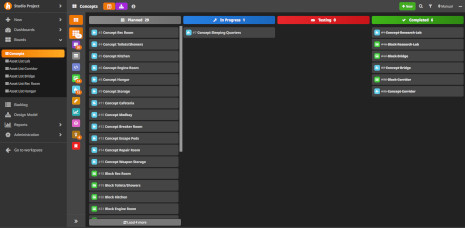
A list of different rooms that I had compiled for my Spaceship.
Originally I had a list of around 15 rooms, all that would require separate models. I had planned to follow a similar structure to my dissertation project, which
was focus on one room at a time and add or remove rooms from my environment depending on how my progress was going. Since I was taking this approach from my
dissertation, I also began to think about the inclusion of the Environmental Storytelling, since it was such a big part of what I was thinking about most days. With the focus of the environment being inside a
small spaceship, I believed that I would be about to create more detailed environments and tell a story about the crew of the ship.
Environmental Storytelling
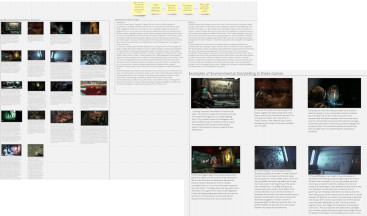
Some examples of Environmental Storytelling in games I found and analysed.
With the examples gathered above, all of them had been from games that I had played at some point and had scenes that really stuck out to me, I took the time to understand why
these specific scenes were so memorable to me. Using information that I had researched in my Dissertation, I used a few questions to help me work out the effectiveness of each
example. These questions were, "Is the example effective visually?", "How does
it affect the narrative?", "How does it make the player feel?" & finally "Does it change the way that the game is played going forward?".
Looking at the examples and my analysing of them, I was able to use this to help me begin to plan out what kind of environmental storytelling elements I could use to
help convey a story to an audience. I began to plan
out a rough short story idea of an event that happened on the ship and how I would tell this story using visual information only. So that I wasn't spreading myself completely thin, with my
extensive list of potential rooms I began with making 2 rooms and connecting them with a corridor to see how it worked out. I began concepting and blocking the Laboratory
, the Bridge and the Corridor for the ship and the potential storytelling elements within them.
Initial Concepts and Blocking
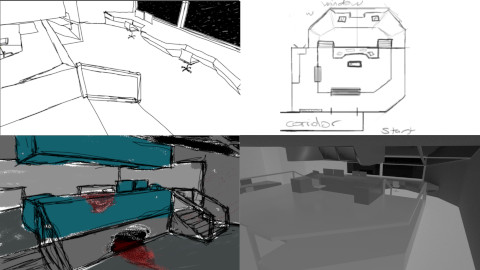
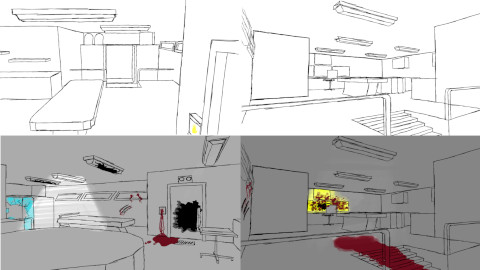
Concepts for the Bridge and the Lab.
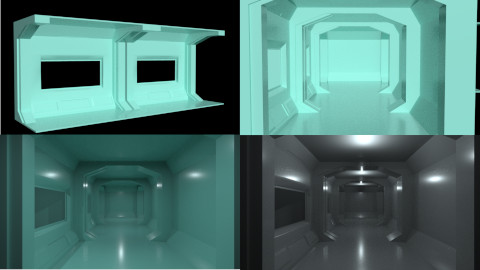
Blocking for the Corridor.
With the narrative that I wanted to convey through the environment, with one of the rooms being a Research Lab, I had planned for their to be some kind of containment cell,
where something was being held, dormant. Only for it to break out at somepoint and attack the people in the room before breaking out of the lab and making it's way through the spaceship.
Using objects in the environment, such as a whiteboard, to show some notes about the specimen and also have other rooms support this narrative by having visual clues about the people on the
ship recently landing on a planet and finding these creatures.
For example, in the hangar, the crew's spacesuits having fresh snow or dirt on them from the planet. Having a log sheet from a storage room to mention some kind of portable container
being taken out. Lots of things like this that would eventually tie everything together. The Lab was intended to be the final room that a viewer would reach and it would fill in the gaps in the
story, left by all of the other rooms. With it's importance in my narrative, the Lab became the focal point of the entire project.
The Lab
My initial plan for the Lab, was to create it in it's "clean", undamaged form first, to help visualise the space accurately, before creating elements of storytelling
within the environment. After concepting and blocking out the room, I began to create some of the larger objects like the tables and shelves etc, before focusing on creating some objects that would help fill up the
desk space and help make the Lab feel like a real room that was currently being used by a group of people.
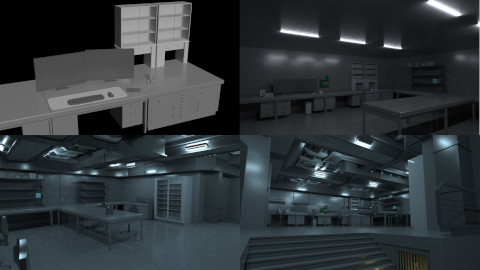
Progress of the Lab over time.
However, as I progressed with the environment, I became aware of my pc beginning to slow down a lot. And this problem never went away, making it increasingly difficult to continue modelling. At the time
I was unsure as to what the problem was so I decided that I would most likely have to stop modelling very soon and focus on other ways of improving my scene.
Substance Painter
I felt that if I could texture my environment to a higher quality than normal, it would be able to do some heavy lifting and help sell the environment as a real place. So, after finalising
my 3D models I then exported all my models individually from my scene and then imported them into Substance Painter. I had to spend some time learning the fundamentals of the software
before I could begin to texture my models as I had never used Substance Painter before.
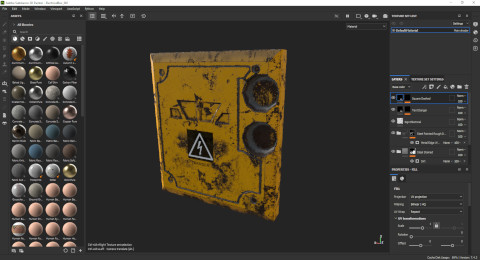
An Electrical Panel for to go on the Walls of the Environment.
As it turned out, Adobe Substance 3D Painter has an abundance of tutorials and documentation on their website, so I was able to learn a lot of the basics quite easily after spending time
going through the resources that they had supplied. One of the first things that I had to do was prepare the models for Substance, sepearating out parts of my models into different UV tiles.
This was done by selecting all the objects from a texture set, then adding an Unwrap UVW modifier and then unpacking the UVs. As well as doing this, also breaking up the objects into sub-objects
with a clear and organised naming system made it very easy to break down my models to make them easy to texture in Substance.
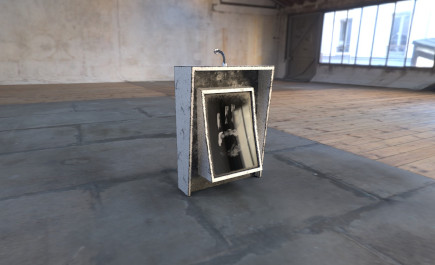
A Hand Scanner for the door to the lab.
I found substance to be a very intuitive software to use and it allowed me to have a high level of control over the textures on my models. With the use of Layering materials
I was able to blend them using masks to create Edge Wear on my models. Also being able to manually paint certain details like scratches, dirt and general wear and tear on
the models really helped to make it look like these objects were used by people.
For the most part, my experience with Substance went really well. However it wasn't without some hiccups along the way. There were a couple of times where the texture groups of the
models wouldn't appear the same in Substance as they did in 3DS Max.
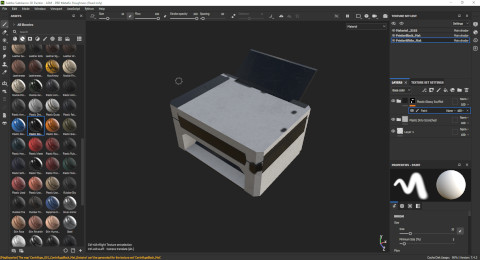
An example of texture grouping not translating accurately.
Sometimes Substance would even have an extra material group that wasn't there in 3DS Max, other times it would add special characters to the file names of the textures that
were to be exported, this would then prevent the textures from exporting. However, I was able to fix most of these issues after looking into them and seeing if anyone else had
encountered them online.
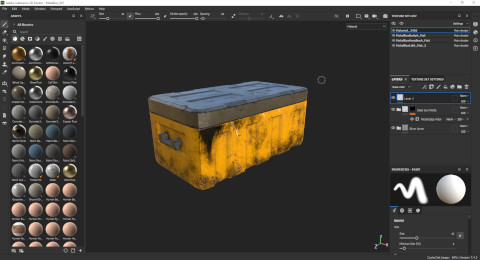
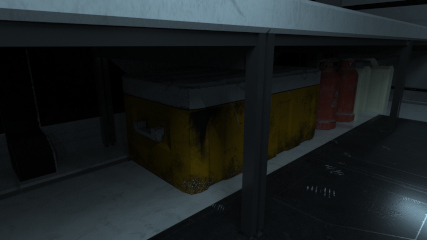
A Metal Crate textured in Substance and 3DS Max
Final Outcome
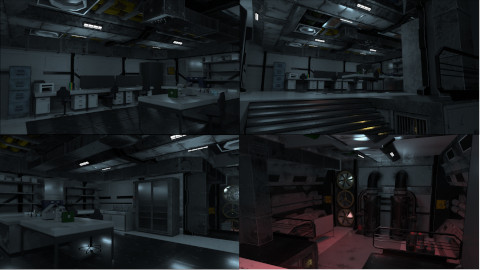
Collection of the Final Renders for the Laboratory
Self-Reflection
Areas that I believe that I did well on during the process of this project
These are some areas that I believe I could improve upon.
Eventually this was narrowed down to a spaceship, then down to just a couple of rooms from a space ship, to finally just a lab. Concept work for the bridge and somewhere else was done. However I never had the time to do any of it. If I hadn't wanted to create a such a highly realistic environment, I would have been able to create a few rooms and corridors connecting them. However since I was trying to model as accurately and realistically as I could it ate up a lot of my time, time that I did not have since I had spent quite a long time narrowing down my initial scope.
© All rights reserved
